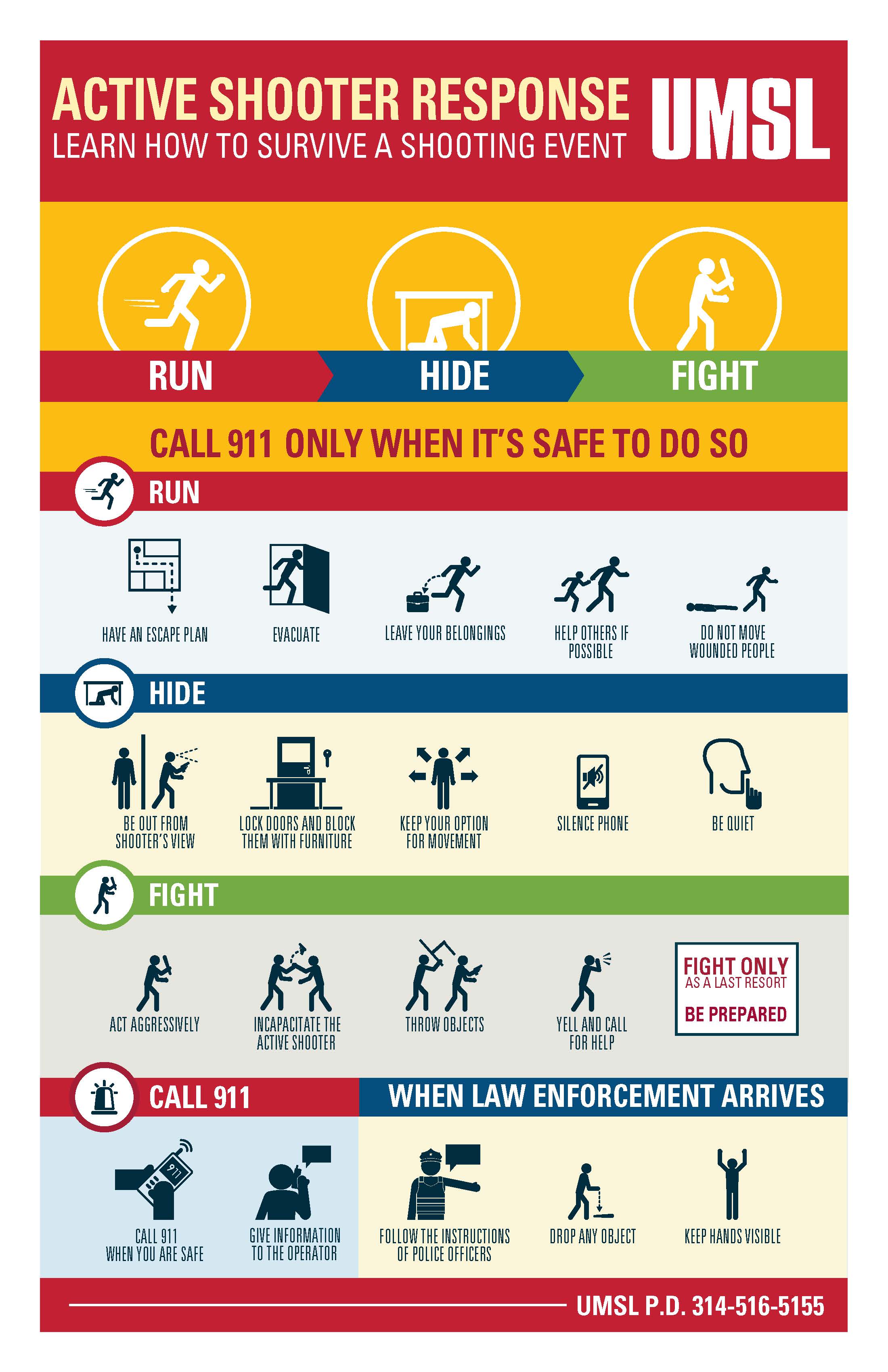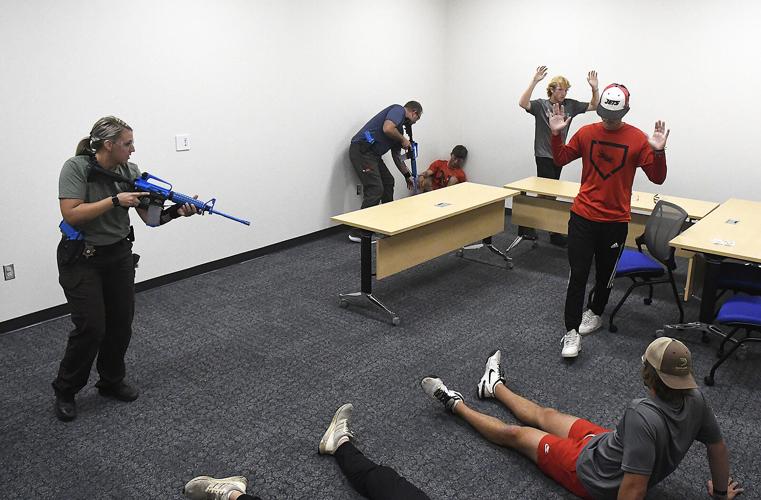How Active Shooter Training Can Save Lives in Crisis Situations
How Active Shooter Training Can Save Lives in Crisis Situations
Blog Article
Discovering the Key Parts and Objectives of Reliable Energetic Shooter Training Programs
Active shooter training programs are critical in gearing up individuals and organizations with the necessary skills to respond successfully to possible hazards. These programs integrate vital parts, such as the "Run, Hide, Fight" strategy, sensible scenario simulations, and communication methods, fostering an atmosphere of readiness. They stress psychological durability to assist individuals navigate high-stress situations. active shooter training. As we check out the details of these training programs, it becomes obvious that understanding their extensive nature is crucial to boosting precaution and reaction abilities. What certain components absolutely define their effectiveness?
Relevance of Energetic Shooter Training
Energetic shooter training programs are crucial for improving preparedness and reaction in the face of potential risks. These programs aim to outfit people, companies, and communities with the knowledge and abilities needed to successfully react to active shooter situations. The raising regularity and seriousness of such events underscore the relevance of aggressive procedures, as timely and informed feedbacks can substantially reduce harm.

In addition, these programs can aid alleviate the anxiety and anxiety that frequently come with conversations about possible hazards. By offering organized guidance and sensible approaches, individuals acquire self-confidence in their capability to react appropriately. Inevitably, the significance of active shooter training exists in its possible to save lives, minimize injuries, and cultivate a ready and resistant neighborhood efficient in encountering unforeseen difficulties.
Key Elements of Training Programs
Effective energetic shooter training programs generally include numerous vital components created to prepare individuals for real-world circumstances. The very first part is comprehensive education on the nature of active shooter events, including data, study, and mental aspects that affect assailants. This academic foundation is essential for fostering recognition and understanding amongst participants.
Next, programs often consist of training on personal safety measures, stressing the "Run, Hide, Fight" strategy. Individuals learn just how to analyze their atmosphere, make quick choices, and take suitable actions throughout a crisis. In addition, the addition of reliable interaction skills is crucial, as participants have to comprehend how to report occurrences and share important details with police.
An additional vital component is the participation of law enforcement or protection experts, that offer understandings into tactical feedbacks and the value of cooperation during a situation. Programs ought to address the mental results of an active shooter situation, using approaches for coping and healing.
Finally, ongoing training and correspondence course are vital to make certain that expertise remains current read review and participants feel great in their capacities. With each other, these key components develop an all-around training program that furnishes people to react properly to an energetic shooter occasion.
Realistic Circumstance Simulations
Realistic scenario simulations are a crucial element of active shooter training programs, offering individuals with the possibility to take part in hands-on practice that mirrors possible real-life scenarios. These simulations boost the training experience by creating an immersive environment where individuals can use theoretical expertise in functional setups.
With using role-playing, mock situations, and specialized training facilities, participants experience the instant difficulties and stress factors linked with an active shooter event. This method of training promotes fast decision-making, teamwork, and the application of safety and security procedures under stress. It enables responders to create critical abilities such as situational recognition, hazard evaluation, and efficient evacuation procedures.
Moreover, practical simulations aid to determine possible weaknesses in individuals' reactions, allowing instructors to offer targeted comments and enhance total readiness. The consolidation of varying situations, consisting of different places and assailant accounts, even more enhances the training experience, ensuring that individuals are well-equipped to deal with a variety of prospective scenarios.
Ultimately, these simulations serve not just to advise yet also to build self-confidence among participants, cultivating a feeling of readiness that is necessary for efficient emergency situation action when faced with an active shooter danger. active shooter training.
Interaction Techniques in Training
Clear interaction is important in active useful source shooter training programs, as it straight affects the performance of reaction initiatives throughout a crisis. Training participants need to understand the procedures and treatments that will lead their activities if confronted with an active shooter situation. Establishing clear lines of interaction makes certain that all people included can relay information immediately and precisely.

In addition, training programs should highlight the value of active listening. Ultimately, efficient communication strategies are vital for preparing people to react decisively and cohesively in the face of an active shooter event.
Emotional Readiness Methods
Mental readiness methods are progressively identified as necessary parts of active shooter training programs. These techniques aim to gear up people with the mental durability needed to react efficiently in high-stress scenarios. By promoting an attitude in harmony with potential hazards, participants can better manage anxiety, anxiousness, and complication throughout crucial occurrences.
Key psychological readiness approaches include scenario-based training and tension inoculation exercises. Scenario-based training submerses individuals in practical simulations that imitate the mayhem of an energetic shooter occasion, permitting them to description practice decision-making under pressure. This exposure assists develop knowledge with emergency situation methods, enhancing instinctual reactions.
Anxiety vaccination entails steady direct exposure to stress-inducing situations, allowing individuals to develop coping mechanisms. This can include breathing exercises, visualization techniques, and cognitive restructuring to reframe negative thoughts. By integrating these strategies, training programs can grow a feeling of self-confidence and control, which is essential in situation scenarios.
In addition, post-incident emotional assistance is critical to resolve the psychological after-effects of an energetic shooter occasion. Integrating mental health resources right into training programs not just prepares people for instant reactions but also advertises lasting mental wellness, ultimately contributing to a more secure and a lot more durable setting.
Conclusion

Report this page